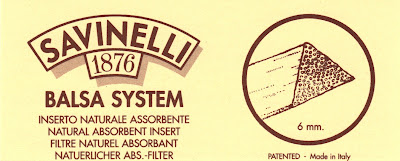Why does my pipe "gurgle" (or why am I such a "wet" smoker), and what can I do about it?
There are a variety of factors that contribute to the irritating problem of "
pipe gurgle" or an
excessively "wet" smoke. In general, gurgling is caused by moisture and saliva that build up in the shank and stem. Moisture is an unavoidable byproduct of combustion and the water vapor will accumulate as you smoke your pipe. As you draw air through the draft hole, it reacts with the moisture. It's sort of like blowing bubbles. The
gurgling is annoying but harmless to your pipe. However, getting a mouthful of nasty tobacco juice, tar, and spit can really foul up your day! Excessive moisture can also contribute to
tongue bite and reduce the flavor of the tobacco. (The drier the smoke, the more flavor you will detect.)
Image source: pipesmokersforum.com
One common reason that one pipe will gurgle more than another has to do with
the size (diameter) of the draft hole in the shank and stem. If the diameter of the draft hole is too small, the droplets of moisture that build up will more readily interfere with air flow and create a gurgling effect. Pipes with larger draft holes tend to have less problems because there is more room for air to pass without having to effect the moisture. That's not to say that a larger drilled pipe can't gurgle, but the chances of it being a problem are decreased significantly.
Pipe shape can also contribute to the moisture problem. For example, if the shape is such that moisture more readily collects in the shank, instead of draining to the bottom of the bowl, "gurgling" and "spitting" will more easily result.
Smoking in
cold weather may also contribute to excess moisture. This is because the greater contrast in temperature between the pipe and the outside air increases the amount of condensation that occurs. Also, heavier breathing and more rapid respiration during a cold weather walk, for example, could produce a higher level of moisture in the stem, which would also contribute to gurgling. Even a pipe that ordinarily doesn't gurgle may become a real bubbler during a cold weather smoke.
If you have severe gurgling problems, you may also want to
try a different tobacco. Some heavily-cased aromatic tobaccos are often the culprit in creating an excessively wet smoke. While burning, they produce large amounts of moisture that collects in the bottom of the bowl.
There are several
easy solutions to wet or gurgling pipes. These tips may not prevent the moisture from developing, but they provide simple ways of dealing with it.
- During the smoke, run a fluffy pipe cleaner through the stem and shank when gurgling occurs. Do not remove the stem while your pipe is hot! Simply run the pipe cleaner in through the bit end as far as it will go and then remove it. This will absorb any standing moisture and helps reduce or eliminate the gurgling effect.
- Another easy technique for dealing with pipe gurgle is to cover the bowl with your fingers (to prevent ashes and debris from flying all over) and blow gently but steadily into the stem for a few moments. This pushes the moisture out of the stem/shank and down into the heel of the bowl where it will no longer present a problem during the smoke.
- My favorite method for dealing with excessive moisture is the pipe flick. Simply grasp the pipe by the bowl, covering the tobacco chamber with the palm of your hand. Now quickly flick the pipe (be careful not to let go!) several times. This expels any moisture that has built up in the shank or stem of the pipe. Repeat as needed.


















